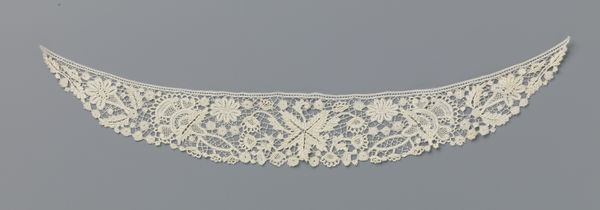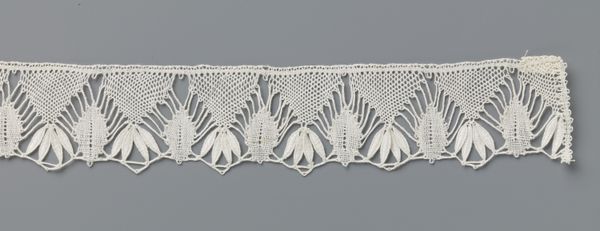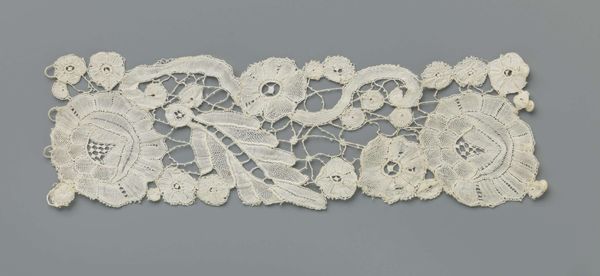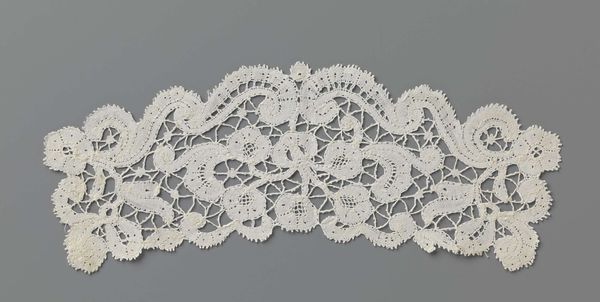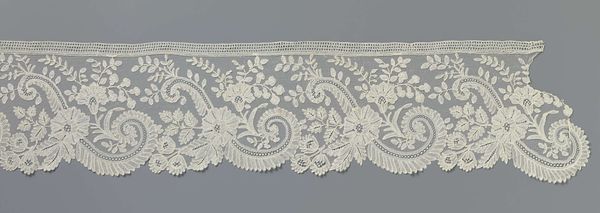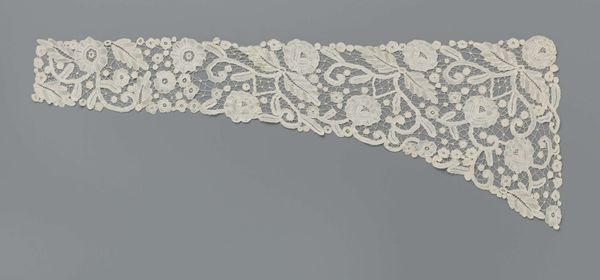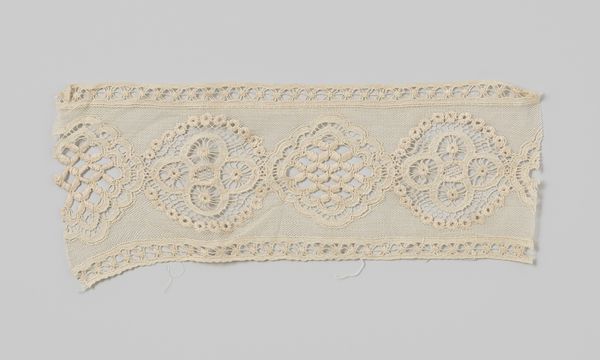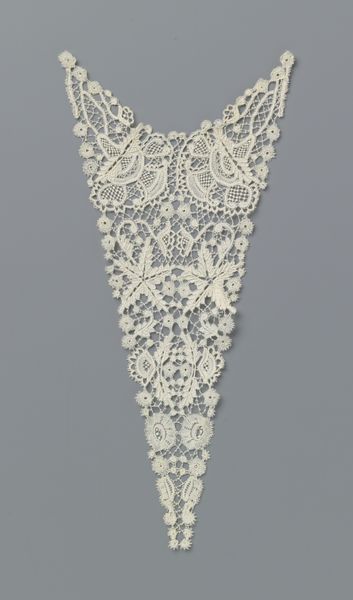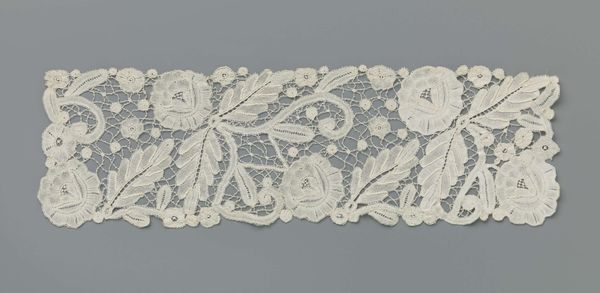
drawing, mixed-media, textile
#
drawing
#
mixed-media
#
textile
#
fashion and textile design
#
hand-embroidered
#
pattern design
#
decorative-art
Dimensions: height 7.5 cm, width 20 cm
Copyright: Rijks Museum: Open Domain
Editor: This is a crocheted lace cuff, probably from the 1910s or 20s. It's so intricate! I'm struck by the texture; you can almost feel the painstaking effort that went into making it. What strikes you about this piece? Curator: The cuff speaks volumes about the societal expectations and limitations placed on women during that era. Textile work was often relegated to the domestic sphere, perceived as ‘women’s work,’ and undervalued as art. Editor: So, it’s more than just a pretty piece of lace? Curator: Exactly! Consider the time it took to create this cuff, the skill involved, and how that labor contributed to the household economy, even if it wasn’t always acknowledged. It’s a powerful symbol of female creativity and resilience within restrictive social structures. The floral and shell motifs themselves, while decorative, could also be interpreted as symbols of femininity and fertility, further embedding the cuff within a gendered context. Do you see how it starts to challenge our preconceived notions of "craft" versus "art?" Editor: Definitely! It’s making me think about all the unseen labor behind seemingly simple objects. Was crochet popular for a particular reason then? Curator: Crochet's accessibility made it popular; it was a relatively inexpensive craft, and patterns were widely available. For many women, it was a way to supplement income, create beautiful objects, and perhaps even express themselves within the confines of their expected roles. It represents agency within confinement. Editor: I never would have considered that! Now I see it as more than just decoration. It's a testament to the power of women's work. Curator: Absolutely. And it challenges us to consider the intersections of gender, labor, and art history, to look beyond the surface and recognize the narratives woven into these objects.
Comments
No comments
Be the first to comment and join the conversation on the ultimate creative platform.
